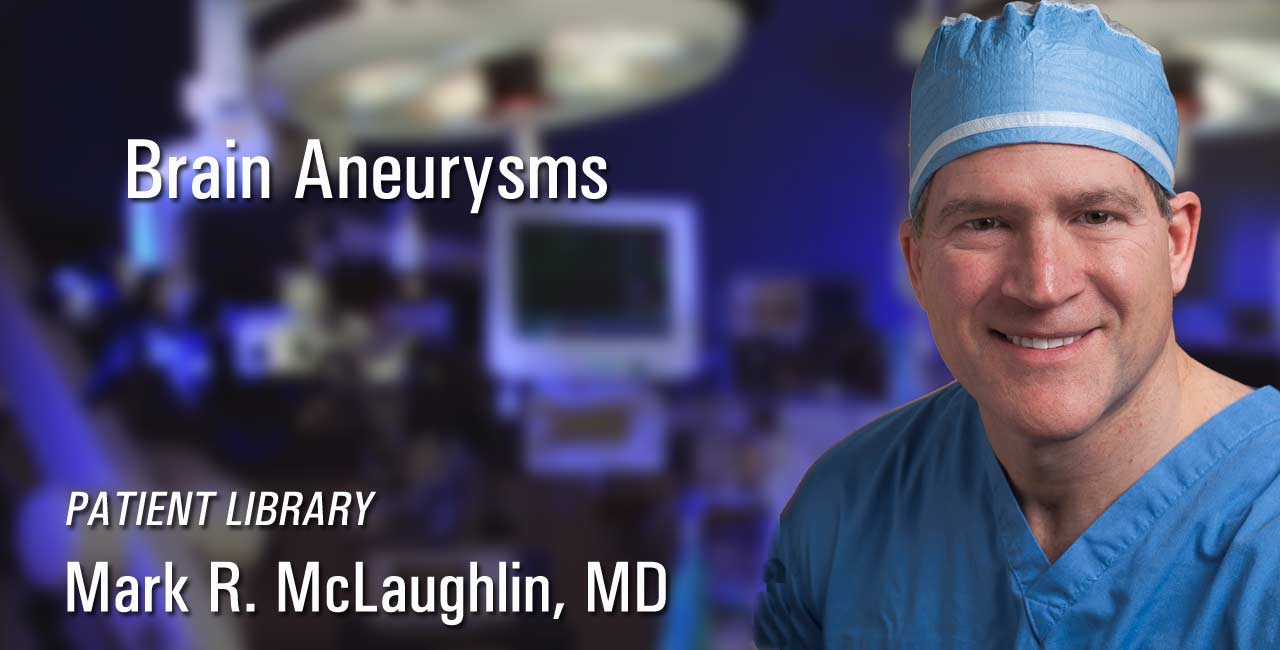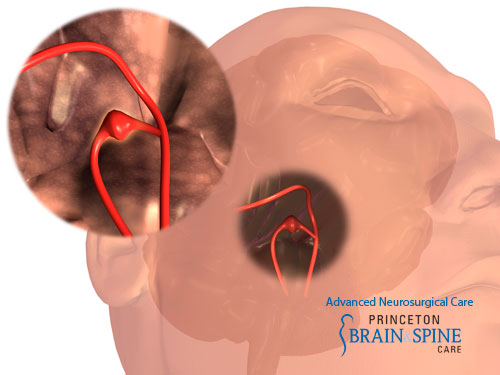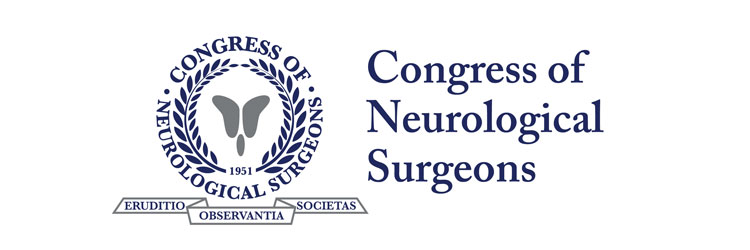Brain Aneurysm

By Mark R. McLaughlin, MD, FACS, FAANS
An aneurysm is an abnormal widening or ballooning of a portion of an artery due to weakness in the wall of the blood vessel. Like many medical terms it originates as a Greek word "aneurusma" (to dilate).
A brain aneurysm therefore, means that there is a weak, bulging spot on the wall of an artery in the brain. This is very similar to what one might see on a bicycle tire that has a weak spot. Other terms for a brain aneurysm are "cerebral aneurysm", or "intracranial aneurysm". Over time, blood flow in the artery pounds against the thinned portion of the wall of the artery.

An aneurysm can form as a result of wear and tear caused by this pounding. Ultimately, the aneurysm may rupture and allow blood to escape into the space around the brain. A ruptured brain aneurysm usually requires advanced surgical treatment by a neurosurgeon.
There are many types of brain aneurysm, but the most common is a saccular aneurysm (sometimes referred to as a "berry aneurysm" becase of its shape). This type can vary in size from a few millimeters to as much as 2 centimeters or even larger. Because of its vulnerability to leak, this type is the most common cause of subarachnoid hemorrhage.
A small percentage of the population may have some form of aneurysm in their brain, but only a small number of these aneurysms result in symptoms or a rupture.
Some risk factors that are believed to contribute to the formation of brain aneurysms include:
- Smoking
- High blood pressure or hypertension
- Congenital, resulting from inborn abnormality in artery wall
- Family history of brain aneurysms
- Age over 40
- Gender, women compared with men have an increased incidence of aneurysms at a ratio of 3:2
- Other disorders: Ehlers-Danlos Syndrome, Polycystic Kidney Disease, Marfan Syndrome, and Fibromuscular Dysplasia(FMD)
- Presence of an arteriovenous malformation (AVM)
- Drug use, particularly cocaine
- Infection
- Tumors
- Traumatic head injury
Risk factors believed to contribute to rupture of a brain aneurysm:
- Smoking
- High blood pressure or hypertension
Symptoms
An unruptured aneurysm is typically without symptoms. This is particularly true with small aneurysms. A large unruptured aneurysm may cause symptoms by pressing on the brain or on the nerves exiting out from the brain.
If you experience:
- Localized Severe Headache
- Dilated pupils
- Blurred or double vision
- Pain above and behind eye
- Weakness and numbness
- Difficulty speaking
you should go directly to the Emergency Room and have this evaluated by your physician or by a neurosurgeon.
When an aneurysm ruptures, this usually results in a subarachnoid hemorrhage (SAH), which is bleeding into the subarachnoid space- the space around the bottom surface of the brain. This can result in sudden onset of symptoms. You should seek immediate medical attention if you are experiencing some or all of these symptoms.
- Sudden severe headache, the worst headache of your life
- Loss of consciousness
- Nausea/Vomiting
- Stiff Neck
- Sudden blurred or double vision
- Sudden pain above/behind the eye or difficulty seeing
- Sudden change in mental status/awareness
- Sudden trouble walking or dizziness
- Sudden weakness and numbness
- Sensitivity to light (photophobia)
- Seizure
- Drooping eyelid



